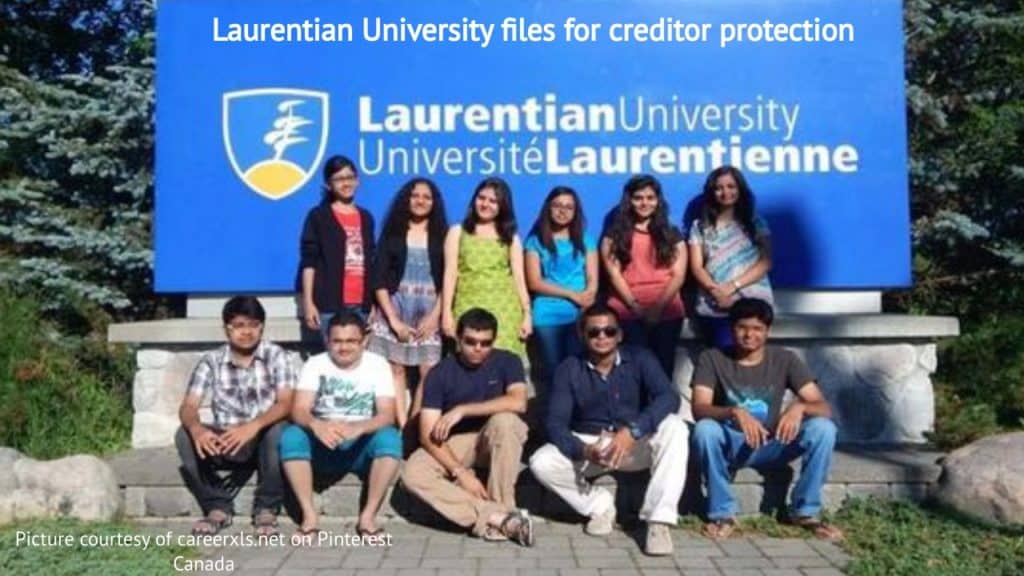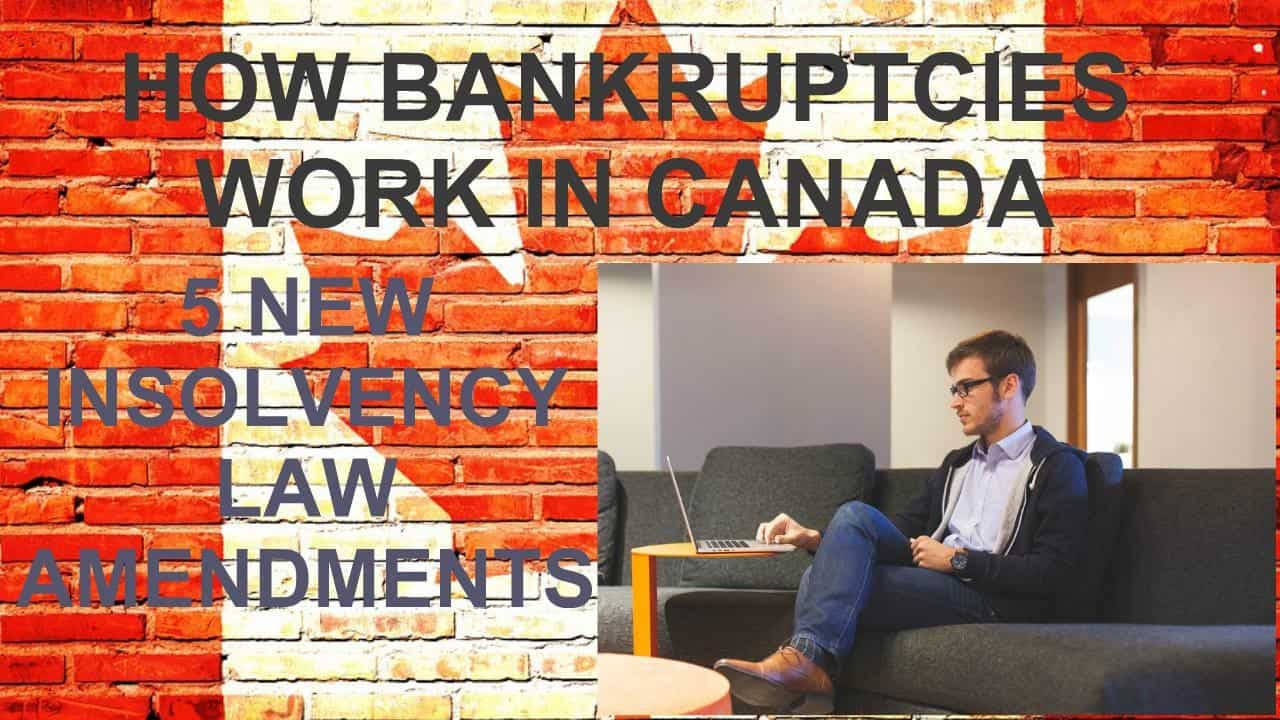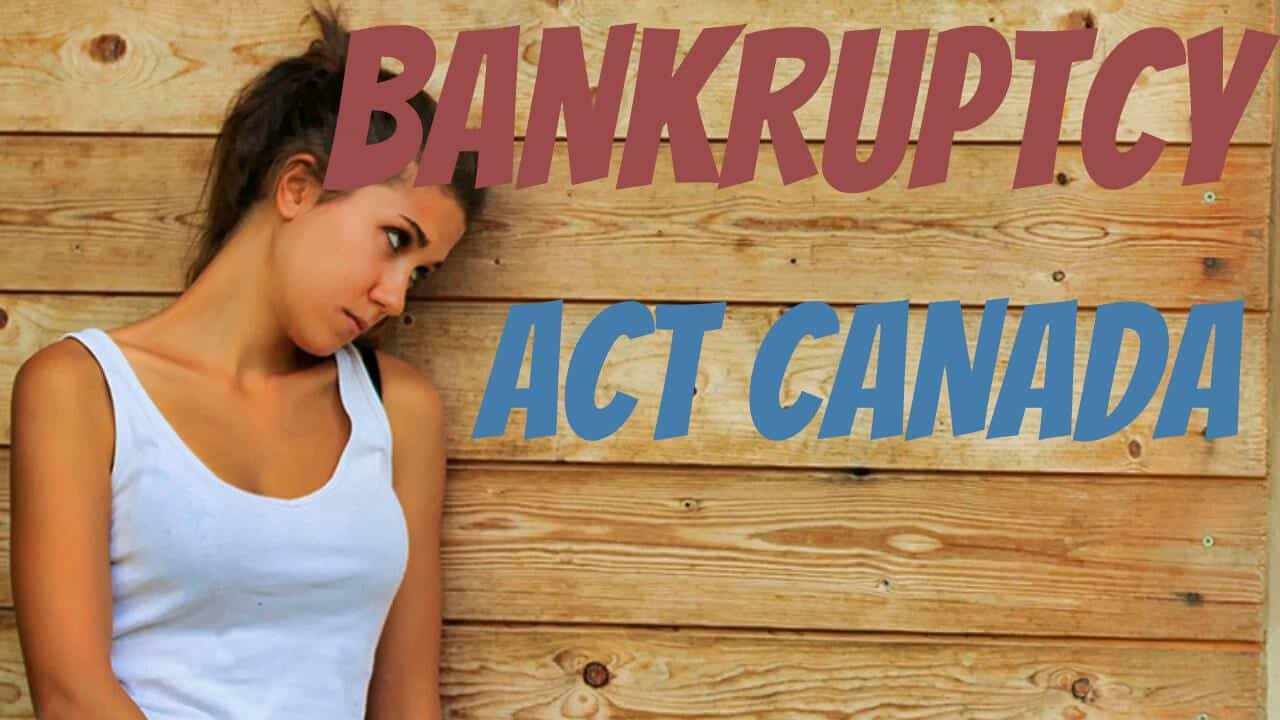We hope that you and your family are safe, healthy, and secure during this coronavirus pandemic.
Ira Smith Trustee & Receiver Inc. is absolutely operational and Ira, in addition to Brandon Smith, is readily available for a telephone consultation or video meeting.
If you would prefer to listen to the audio version of this Brandon Blog, please scroll to the bottom and click play on the podcast.
UPDATE MAY 5, 2021: SEE OUR UPDATED BLOG PUBLISHED TODAY ON THE LAURENTIAN UNIVERSITY INSOLVENCY CREDITOR PROTECTION PROCEEDINGS STATUS – CLICK HERE FOR THE UPDATE
Laurentian University introduction
Laurentian University is facing a cash crisis and has filed for creditor protection. The Ontario university states that the application under the federal Companies’ Creditors Arrangement Act (CCAA) is intended to permit the university to continue running day-to-day operations during restructuring.
The Sudbury, Ontario school is not shutting down and will continue to provide services for students. It states it will keep normal operations and keep classes running. In this Brandon Blog, I talk about what creditor protection in the Canadian context is and why Laurentian University did so.
Laurentian University: What is creditor protection?
In its simplest terms, creditor protection is the protection you get when you start a proceeding with a filing under either the Bankruptcy and Insolvency Act (Canada) (BIA) or the CCAA. Under the BIA, an individual or company gets that protection in either a consumer or corporate bankruptcy. This safeguard is also obtained by filing under the restructuring proposal provisions of the BIA. A company safeguards itself when it files for restructuring under the CCAA.
Once a filing is done, without getting special permission from the court, none of your creditors can start or continue legal action against the person or the company for the repayment of a debt or for any enforcement action against its assets.
Laurentian University, therefore, received its sheltering once it made its filing under the CCAA. When using this statute, it can also be called CCAA protection.
Below is the section titled “How the Laurentian University restructuring story begins”. I discuss its particular issues leading up to the need to file.
Laurentian University: What is a stay period?
The “time out” that a person or business gets from its creditors is called a stay period (Stay of Proceedings). Upon the agreement of the court to the initial filing, the result is that the court will issue an Order giving the company an initial 30 days of protection from creditors to allow for the preparation of the restructuring proposal called a Plan of Arrangement.
This initial stay can be extended by the court, as long as the judge is convinced that the company is acting in good faith and working expeditiously in sorting through the myriad of issues stopping it from putting together its Plan of Arrangement.
Laurentian University: What does CCAA mean
The CCAA is a Canadian federal law that helps companies in financial difficulties emerge from its difficulties. The company begins its reorganization proceeding with its application to the court and files for creditor protection to avail itself of the process for a company and its creditors to come to an agreement on how to reorganize the company’s debt, while the company continues to operate normally and pay amongst other things, wages to its employees.
One of the biggest advantages of the CCAA is that it allows a business to “hold the fort” while the creditors and the company work out an agreement that will hopefully get the company back on its feet. While operating in this fashion, company management remains in control of running the business. The company does not hand over its assets to a licensed insolvency trustee (Trustee). Rather, the Trustee is appointed by the court to act as Monitor.
As the title sounds, the role of the Monitor is that of the neutral court officer working with the company. The duties of the Monitor include:
- overseeing and providing supervision of the company’s affairs;
- assisting in the negotiations with creditors;
- helping with the drafting of the Plan of Arrangement for describing what the restructuring process will be;
- report regularly to the court on the progress and details of the restructuring administration, and ultimately,
- conducting the meetings of the various classes of creditors where voting on the Plan of Arrangement takes place.
Although the CCAA is unique to the country of Canada, other countries have similar restructuring legislation. The most famous is probably Chapter 11 of the US Bankruptcy Code. This is when you normally hear the term “bankruptcy protection“.
Laurentian University files to reorganize university finances
Last Fall, Laurentian University recognized it was in financial trouble. On October 1, 2020, it issued a press release advising that it has financial challenges brought on by the global COVID-19 pandemic and its pre-existing structural deficit. It also announced at that time that it hired Ernst & Young as financial advisors to assist in a further review of its detailed financial results, budgets, and our various initiatives to help identify and analyze any additional opportunities for cost savings or improvement.
On February 1, 2021, facing insolvency, Laurentian University took the step to begin its insolvency proceeding under the CCAA in order to come up with a formal restructuring plan. Since it is in the early stages of the insolvency administration, the actual plan has not yet been developed as Laurentian University needs time to come up with the proper plan. It will be one of many future events I will keep my eye on for you.
From my review of the filing documents, I can tell you what the story is so far.
How the Laurentian University restructuring story begins
“We are working with all stakeholders to ensure a smooth process for students,” said Peter Baxter, the university’s provost and vice-president, academic.”
Who would’ve thought that universities, which are supposed to be institutions of higher learning, would actually run into financial problems and put their stakeholders at risk? But that’s exactly what happened and is the current situation with the Laurentian University insolvency in Sudbury, Ontario. I guess the place was not run by any of the finance profs! It is obviously a stressful time for all students, staff, faculty, and creditors.
Dr. Robert Haché, the President and Vice-Chancellor of the Laurentian University of Sudbury, swore the necessary affidavit on January 30, 2021, in support of Laurentian’s court application for an Initial Order to commence CCAA proceedings. In his affidavit, Dr. Haché stated:
- Laurentian’s financial issues were first determined as early as 2008-09 when a prior administration gave a budget to the Board that would not be balanced for the 2008-2009 academic year and showed little to no improvement for the future financial prospects of the university absent any revised processes. The budget was approved, but the Board expected the financial situation to be fixed as a top priority item.
- A Plan for Regaining Sustainability at Laurentian was presented to the school’s Board on December 18, 2008, and again on February 20, 2009. The Board approved the implementation of the plan, expecting to regain financial health over a three-year period.
- Starting in 2014, Laurentian undertook a $64 million Campus Modernization Project for the construction of approximately 250,000 sq. ft. of classrooms, research, study as well as a public area.
- The Campus Modernization Project involved Laurentian incurring a substantial amount of long-term debt (approximately $40 million) to pay for the construction of buildings and facilities to modernize the campus in order to accommodate its historical growth and fuel the projected enrolment growth. The university elected to defer repayment of the principal amounts borrowed until after construction was completed, leading to the accrual of further interest.
- When the Board approved the 2016-17 operating budget, LU forecasted operational deficits continuing through 2021-22 leading to an accumulated operational deficit of greater than $43 million.
- With the exception of the modest growth experienced in 2020, enrolment has declined each year from 2015 to 2018 and tuition fees remain low, while labour and debt servicing costs have grown substantially.
- The 10% tuition reduction and tuition freeze ordered by the Province of Ontario beginning in 2019.
- Laurentian’s academic costs are generally higher as a percentage of total costs than other Ontario universities.
- Not re-evaluating over the last decade its programs to make sure it is focusing on those the marketplace of students deem relevant and required.
- The COVID-19 pandemic has made all these issues worse.
From reading his sworn affidavit, I would use one simple word to describe what has led to the Laurentian University insolvency – MISMANAGEMENT! Dr. Haché joined Laurentian University in July 2019. So he has only been involved in this mess for the last 19 months.
What Laurentian University reports its immediate plans are by making this CCAA filing
Laurentian University reported that as at April 30, 2020, it had $358.5 million in assets based on generally accepted accounting principles. Of that total, only $33.2 million is either liquid or near-liquid. As at the same date, its liabilities are:
- Line of credit $14.4 million
- Short-term loan $1.4 million
- Accounts payable and accrued liabilities $22.4 million
- Accrued vacation pay $1.8 million
- Deferred revenue $1.0 million
- Current portion of long-term debt $2.7 million
- Long-term debt $89 million
- Employee future benefits liabilities $20.8 million
- Deferred contributions $38.6 million
- Deferred capital contributions $129.9 million
This adds up to $322 million. The balance sheet balances because the remainder represents either restricted capital or special purpose endowments.
Laurentian University advised the court that it intends to come back requesting an Amended and Restated Initial Order. Right now, Laurentian has the benefit of the Stay of Proceedings and will not be making any payments on any outstanding amounts owing as of February 1, 2021.
Among other things, the motion in respect of the Amended and Restated Initial Order will seek the following additional relief:
- extending the Stay of Proceedings to April 30, 2021;
- suspending Laurentian’s requirement to make certain special payments in respect of its defined benefit pension plan, pending further Order of the Court;
- suspending Laurentian’s need to reply to requests for information received under the Freedom of Information and Protection of Privacy Act (Ontario) during the Stay of Proceedings, nunc pro tunc to February 1, 2021;
- the appointment of a mediator, as an officer of the Court and a neutral third party to undertake a mediation of various issues under the supervision of this Court, on an urgent basis;
- approving Laurentian’s request for a debtor-in-possession credit facility (the “DIP Facility”) borrowing authority up to the principal amount of $25 million to finance its working capital requirements and other general corporate purposes, post-filing expenses and costs during the Stay of Proceedings.
The court has now declared that Laurentian University is insolvent. I will be following this CCAA administration and will write more blogs on material points of special interest as this restructuring winds its way through the court.
Laurentian University summary
I hope you enjoyed the Laurentian University Brandon Blog post. If you are concerned because you or your business are dealing with substantial debt challenges and you assume bankruptcy is your only option, call me. It is not your fault that you remain in this way. You have actually been only shown the old ways to try to deal with financial issues. These old ways do not work anymore.
The Ira Smith Team utilizes new modern-day ways to get you out of your debt difficulties while avoiding bankruptcy. We can get you the relief you need and so deserve.
The tension put upon you in such a time of uncertainty is big. We know your discomfort factors. We will check out your entire situation and design a new approach that is as unique as you and your problems; financial and emotional. We will take the weight off of your shoulders and blow away the dark cloud hanging over you. We will design a debt settlement strategy for you. We know that we can help you now.
We understand that people and businesses facing financial issues need a realistic lifeline. There is no “one solution fits all” method with the Ira Smith Team. Not everyone has to file bankruptcy in Canada. The majority of our clients never do. We help many people and companies stay clear of bankruptcy.
That is why we can establish a new restructuring procedure for paying down debt that will be built just for you. It will be as one-of-a-kind as the economic issues and discomfort you are encountering. If any one of these seems familiar to you and you are serious about getting the solution you need, Contact the Ira Smith Trustee & Receiver Inc. group today.
Call us now for a no-cost consultation.
We will get you or your business back up driving to healthy and balanced trouble-free operations and get rid of the discomfort factors in your life, Starting Over, Starting Now.
We hope that you and your family are safe, healthy, and secure during this coronavirus pandemic.
Ira Smith Trustee & Receiver Inc. is absolutely operational and Ira, in addition to Brandon Smith, is readily available for a telephone consultation or video meeting.




